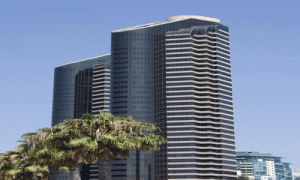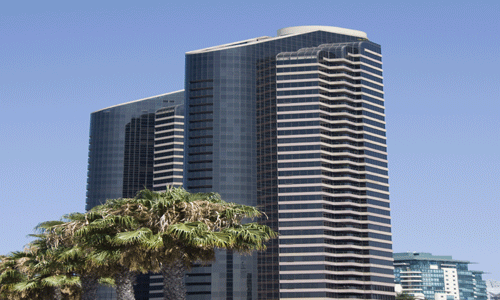By: Ravi Sinha
 Track2Realty Exclusive: The Umeda Exit of the Ikeda Route of the Hanshin Expressway system passes through this building. The expressway is the tenant of these floors. The elevator doesn’t stop on floor 5th-7th; floor 4 being followed by floor 8. These floors consist of elevators, stairways, machinery and other stuff.
Track2Realty Exclusive: The Umeda Exit of the Ikeda Route of the Hanshin Expressway system passes through this building. The expressway is the tenant of these floors. The elevator doesn’t stop on floor 5th-7th; floor 4 being followed by floor 8. These floors consist of elevators, stairways, machinery and other stuff.
The highway passes through the building as a bridge, held up by supports next to the building, making no contact with the building itself. The building has a double core construction, with a circular cross section and special care is taken by providing surrounded structure to the highway to protect the building from noise and vibration.
Babulal Varma, MD of Omkar Realtors & Developers believes if policy incentives are granted, Mumbai is quite capable of replicating global standards, while providing its own unique solutions. According to him, the Urban Renewal Authority’s 4Rs strategy is now well established and gaining recognition in the community. The 4Rs are Redevelopment, Rehabilitation, Reservation and Revitalisation which, when applied together, enables a holistic approach to unlock the full potential of urban renewal.
“Today, Hong Kong has emerged as a world class city with tall vertical structures, sector-by-sector massive development, open spaces and greenery and most prominently, Floor Space Index (FSI) of 5–35. Similarly for urban revitalization, there are several policies and programmes in American cities. The pursuit of growth through economic development has become the key strategy in efforts to revitalize older American cities. All levels of government have come to play roles in the complex inter-governmental process of designing, funding and implementing economic development programmes,” Varma narrates as an example.
Pranay Vakil, former Chairman of Knight Frank, asserts holistic solution is needed for reaching global benchmark as urban infrastructure has not kept pace with the massive influx of people. Roads in a constant state of disrepair, perpetual traffic congestion and an overstressed rail network are characteristics of our transportation system. One only has to look global at leading western cities like Manhattan and London which have multiple efficient lines of commute into the CBD.
“Manhattan faces much of the same land constraints of Mumbai as well as the fact that it is a peninsular city. However, efficient and farsighted planning has ensured its evolution over and under the ground with skyscrapers and underground metros which maximize land-use. Its local railways connect locations up to 132 kms away and ferries provide connectivity to dense residential hubs like New Jersey. Using this example as a model, existing FSI norms for frontline city like Mumbai must be relaxed to maximize land-use,” says Vakil.
…..to be continued





